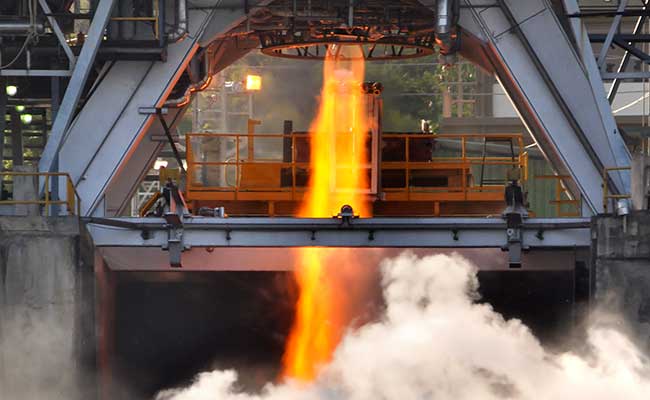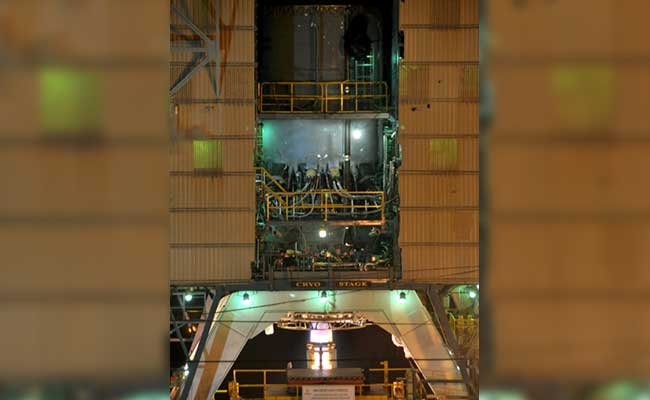
ISRO tested India's largest cryogenic engine which will power the GSLV Mark III rocket.
- ISRO tests engine for mammoth GSLV Mark III rocket
- It can power rocket that carries 4-ton class satellite, heavier than PSLV
- Engine developed after two decades of work, tech denied by Russia, US
Did our AI summary help?
Let us know.
New Delhi:
India's space agency certainly seems to be on a trajectory to amaze. After stealing the headlines worldwide this week for launching 104 satellites with a single rocket, the Indian Space Research Organisation or ISRO has successful tested the country's largest cryogenic engine for a full 10 minutes. The engine will power its mammoth Geosynchronous Satellite Launch Vehicle (GSLV) Mark III rocket capable of propelling a 4-ton class satellites into geo-synchronous orbit - the altitude where satellites revolve in sync with the Earth's rotation.
 With this final hurdle crossed yesterday at an ISRO facility in Tamil Nadu's Mahendragiri, India is all set to test the GSLV Mark III rocket which is almost 50 meters high and weighs 414 tons - equal to 75 Asian elephants. The rocket will be a successor to the GSLV Mark II which was first launched in 2001 and can carry a heavier payload than the Polar Satellite Launch Vehicle or PSLV.
With this final hurdle crossed yesterday at an ISRO facility in Tamil Nadu's Mahendragiri, India is all set to test the GSLV Mark III rocket which is almost 50 meters high and weighs 414 tons - equal to 75 Asian elephants. The rocket will be a successor to the GSLV Mark II which was first launched in 2001 and can carry a heavier payload than the Polar Satellite Launch Vehicle or PSLV.
This engine has been developed after two decades of hard work as the technology was denied to India by Russia under pressure from the US.
 The rocket engine uses liquid hydrogen and liquid oxygen as fuel that are stored at minus 253 degrees centigrade and then ignited to burn at plus hundreds of degrees centigrade just a few centimetres down engine. A very complex technology, the cryogenic engine has been mastered only by Russia, USA, France, China, Japan and India.
The rocket engine uses liquid hydrogen and liquid oxygen as fuel that are stored at minus 253 degrees centigrade and then ignited to burn at plus hundreds of degrees centigrade just a few centimetres down engine. A very complex technology, the cryogenic engine has been mastered only by Russia, USA, France, China, Japan and India.
India's space programme received international acclaim after ISRO scientists pulled off an ambitious mission three years ago to send a probe to orbit Mars that succeeded at the first attempt - and at $74 million cost less than the Hollywood space film Gravity.

ISRO's cryogenic engine for the GSLV creates a lot more thrust than the solid fuel-pwered PSLV.
This engine has been developed after two decades of hard work as the technology was denied to India by Russia under pressure from the US.

The engine takes in fuel at extremely cold temperatures and then burns it at several hundred degrees.
India's space programme received international acclaim after ISRO scientists pulled off an ambitious mission three years ago to send a probe to orbit Mars that succeeded at the first attempt - and at $74 million cost less than the Hollywood space film Gravity.
Track Latest News Live on NDTV.com and get news updates from India and around the world

